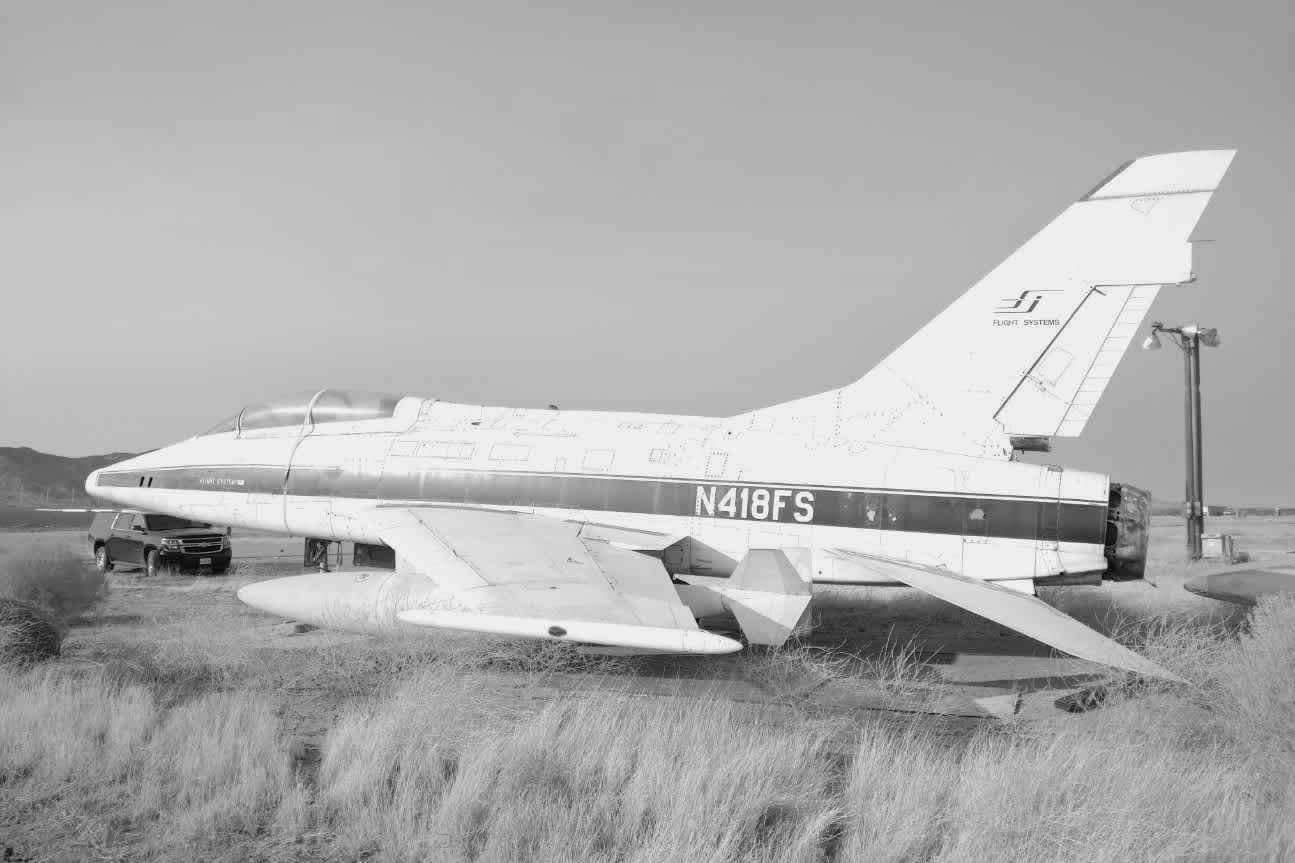F100 Super Sabre Recovery
Follow The Teardown of N418FS On Our YouTube Channel
Honoring Veterans and Military Aviation
Airworks is embarking on an extraordinary mission to recover and donate the historic F-100 Super Sabre jet, N418FS, to the Fort Worth Aviation Museum in Fort Worth, Texas. This initiative not only preserves an iconic piece of military aviation history but also pays tribute to the sacrifices of military veterans.
Originally purchased at auction in 2020, N418FS is set to join a prestigious collection of aircraft at the museum, where it will serve as both a historic artifact and an educational tool. Visitors will gain a firsthand look at the F-100’s significance, particularly its role in the Vietnam War and its impact on military aviation.
But before it reaches its final home, an intricate recovery operation must take place. Transporting an aircraft of this magnitude is no small feat, requiring meticulous planning, specialized tools, and the efforts of a dedicated team.
The People Behind the Mission
This initiative wouldn't be possible without the dedication and collaboration of key individuals and organizations. At the helm of this mission are Darryl Weflen (President and CEO, Airworks) and Sheila Stang (Vice President, Airworks), who acquired N418FS in 2020 with the guidance of Jerry Fuentes (Veteran Fabricator).
The donation and transportation effort is being executed with the support of Jim Hodgson (Chairman and Executive Director, Fort Worth Aviation Museum) and Laird Leavoy (Benefactor), along with a passionate crew of volunteers, F-100 experts, and aviation enthusiasts. Their combined efforts will ensure the F-100 finds a permanent home where it can inspire future generations.
And that home, the Fort Worth Aviation Museum, is a fitting destination for such an important aircraft.
(Below) Laird Leavoy
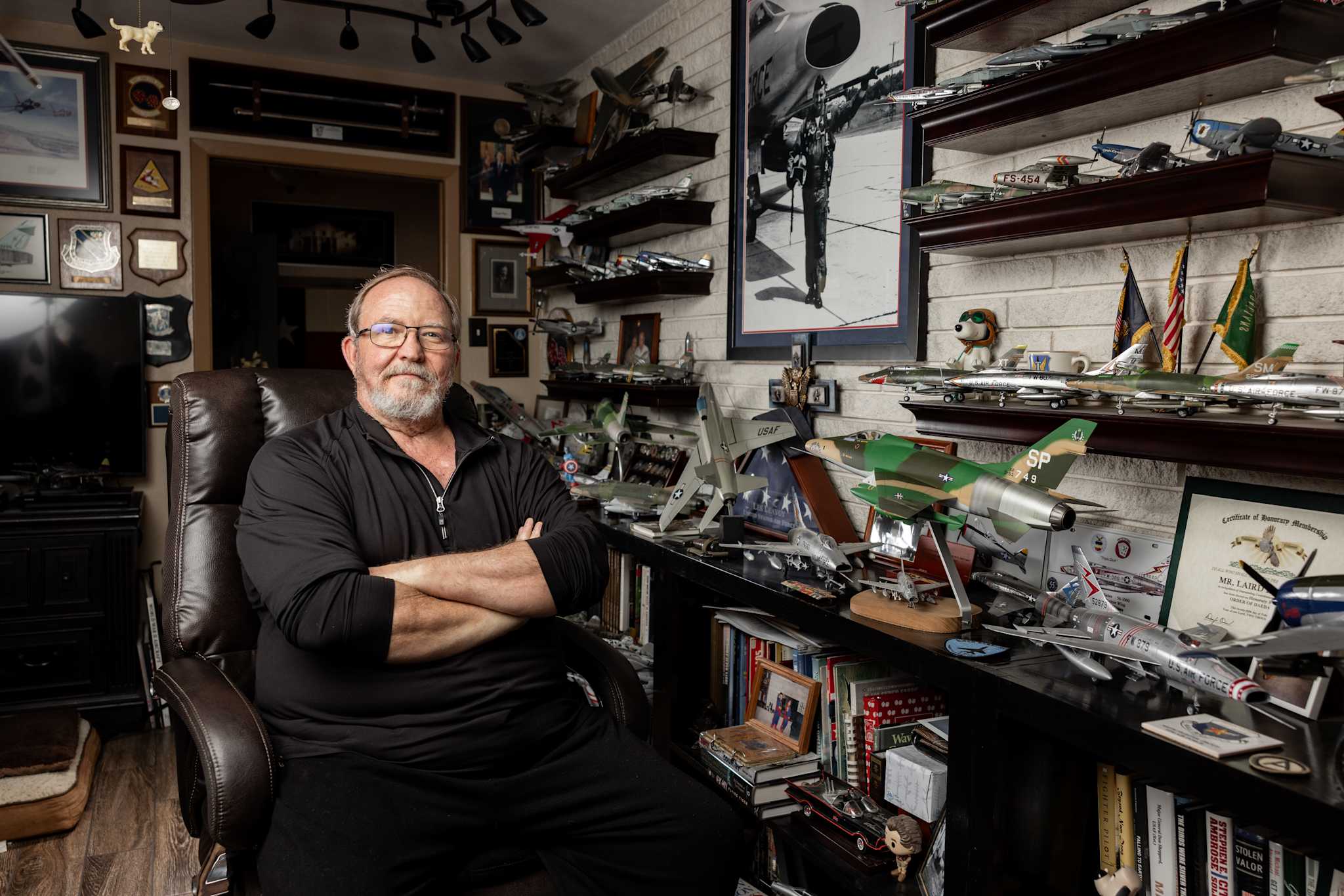
(Below) Jim Hodgson
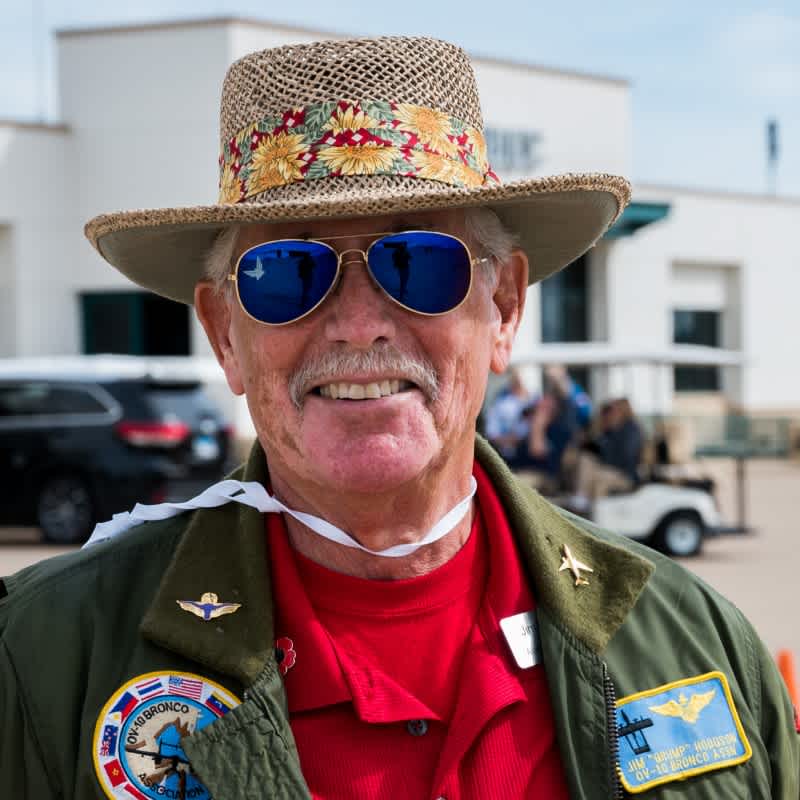
Fort Worth Aviation Museum: A Legacy of Preservation
The Fort Worth Aviation Museum (FWAM) houses a remarkable collection of over 30 military aircraft, ranging from a 1943 BT-13 trainer to an F/A-18 Hornet that once served with the Blue Angels. With its mission to preserve and showcase the aviation heritage of North Texas, FWAM offers visitors an interactive experience with "The Most Touchable Warbirds in Texas."
The addition of the North American F-100 Super Sabre is particularly significant. As the first U.S. Air Force fighter capable of supersonic speed in level flight, the F-100 played a crucial role during the Cold War and Vietnam War. In Texas, it was notably operated by the 149th Tactical Fighter Group of the Texas Air National Guard.
FWAM’s commitment to restoration is exemplified in projects like the General Dynamics YF-16 Prototype #2, unveiled to the public in June 2024 after an extensive restoration effort. The arrival of N418FS aligns with the museum’s mission to inspire future generations through military aviation history.
Before the F-100 can take its place at FWAM, however, it must be retrieved from its current location—a place with its own rich aviation history: the Mojave Air and Space Port.
The Mojave Air and Space Port: Where History Meets Innovation
The Mojave Air and Space Port, commonly known as The Boneyard, has played a pivotal role in aerospace history. Established in 1935, the site has evolved from a small airfield supporting mining operations to a world-renowned hub for aerospace innovation.
From WWII to Modern Aerospace Innovation
During World War II, the Mojave facility expanded into the Marine Corps Auxiliary Air Station (MCAAS), where it played a crucial role in training Marine Corps pilots. Later, during the Korean War, it was reactivated before transitioning into a center for civilian and military flight testing under Dan Sabovich.
In 2004, it became the first U.S. facility licensed for horizontal launches of reusable spacecraft, leading to groundbreaking projects like SpaceShipOne. Today, it is home to over 60 aerospace companies, including Virgin Galactic, Stratolaunch Systems, and Masten Space Systems.
Beyond its role in innovation, the Mojave Air and Space Port serves as a strategic aircraft storage facility. Its dry desert climate helps prevent corrosion, making it an ideal location for long-term storage and preservation—an environment that has kept N418FS in stable condition, awaiting its next chapter.
But getting the aircraft out of the desert and ready for transport requires specialized equipment.
The Tools Powering the Recovery
Disassembling an aged aircraft that weights 21,712 pounds, 50' 4" long, and with a wingspan of 38' 9"in the sweltering heat of the Mojave Desert is no small feat. For nearly 20 years, we have designed and manufactured equipment that is designed to tackle the biggest jobs, in the most challenging of conditions, and we are excited to put them to the test here.
To ensure that the disassembly goes as smoothly as possible, we are contributing:
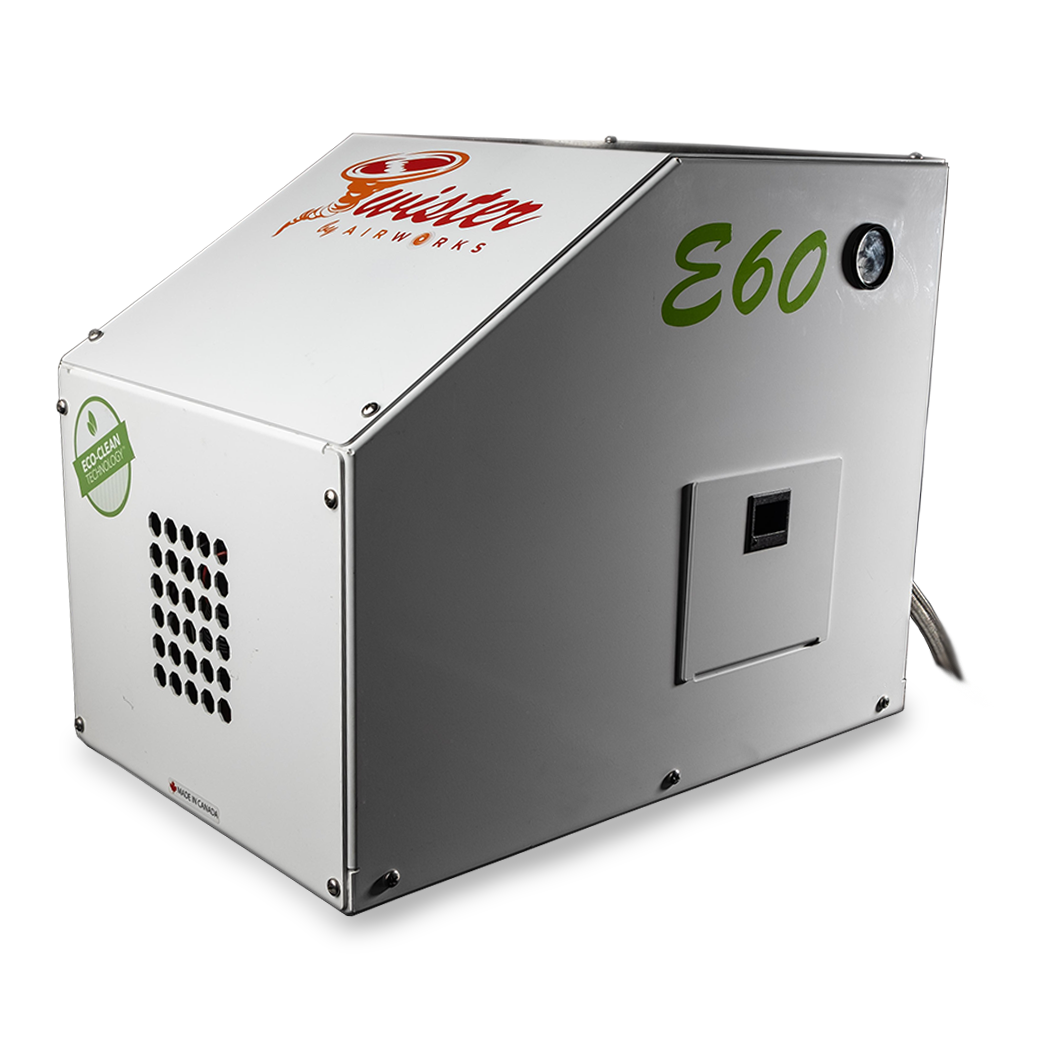
Twister E60
Our Twister E60 is the world's first compact DC-powered rotary screw air compressor. Boasting an impressive 60 CFM output at 100psi, in a sleek, compact package. The E60 coming along with us for the teardown will be mounted to our service truck, and will be used as a highly mobile support compressor as needed.
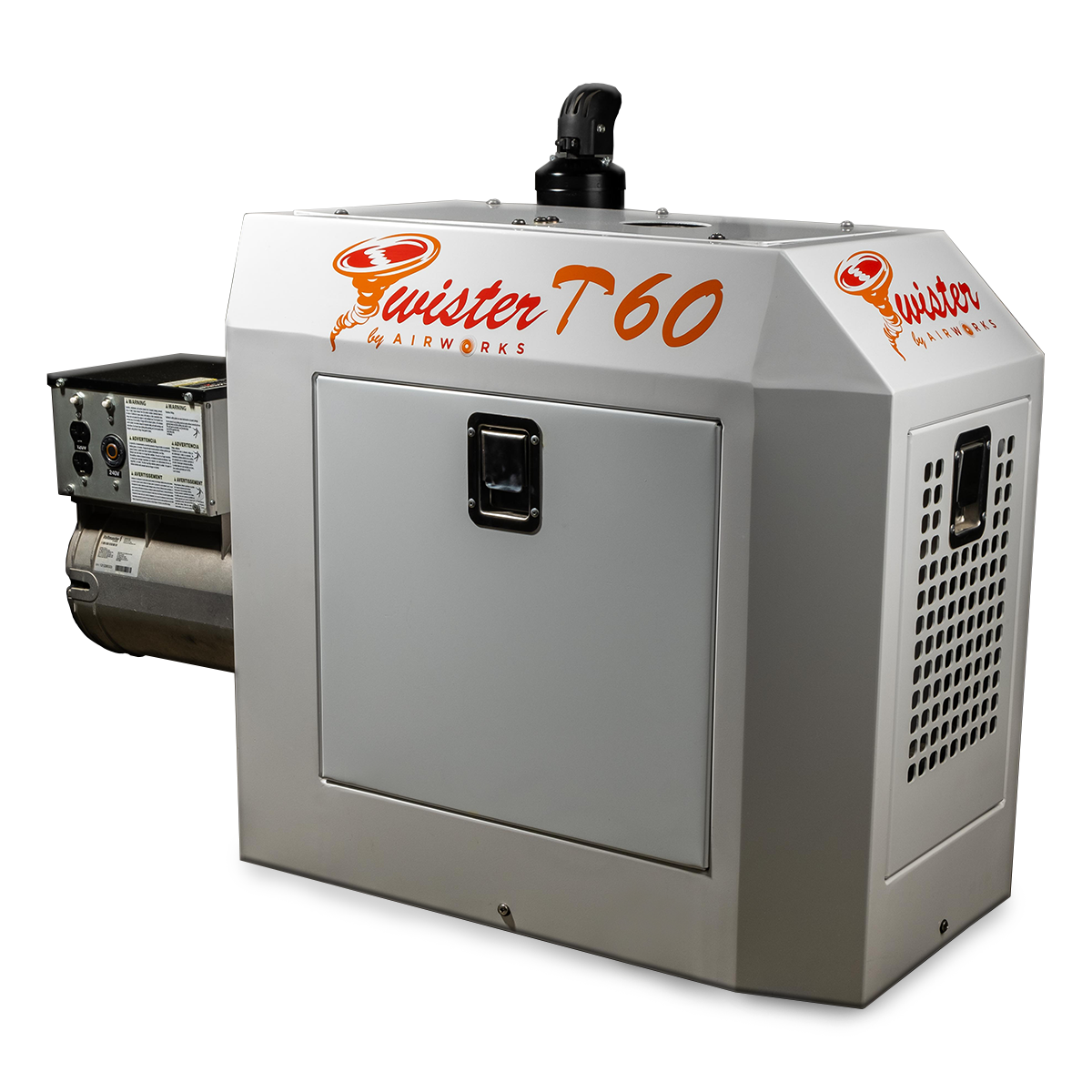
Twister T60
The Twister T60 is our compact diesel-powered rotary screw compressor, and will act as our primary compressor for the job site. The T60 was the first compressor we ever developed as a company, and is as reliable as they come.
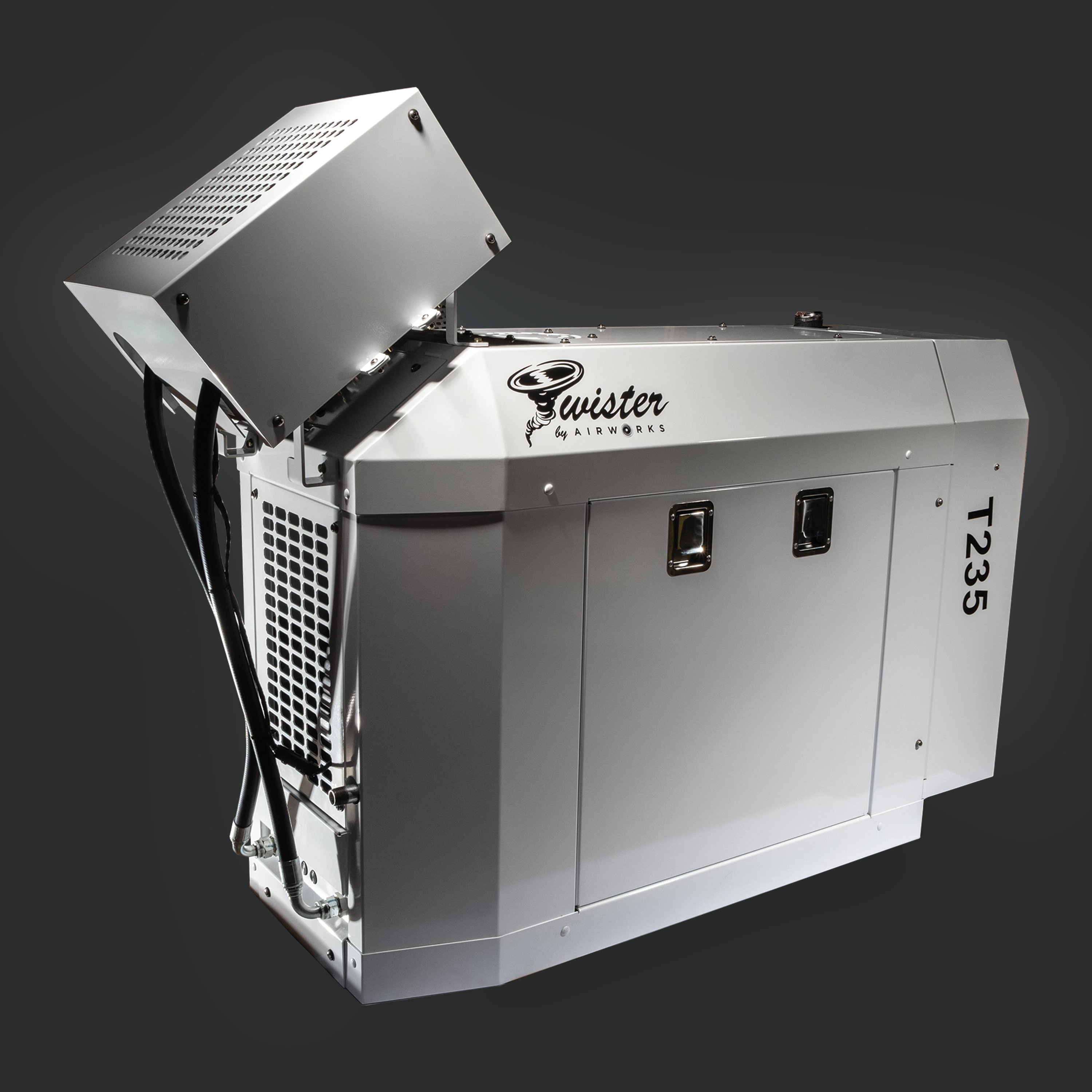
Twister T235 EVO
The Twister T235 EVO is our flagship compressor, with a truly massive 235 CFM output. While the T235 EVO is more likely to be found powering operations on large construction projects, or painting the lines on vast swathes of highway, we will have one on hand to ensure that we are able to meet our air needs in any scenario imaginable.
Lightning Booster Pak
The Lightning is an extremely high-powered battery booster, and will be used to open up the canopy on the F100, as well as to power up the onboard controls. The Lightning's proprietary smart-sensing technology will prevent ensure the safety of the circuits onboard the aircraft.
State Of The Art Air Tools
We will be providing high-end air tools from brands that we often recommend to pair with our compressors, such as impact wrenches from Mac Tools, hose reels from Reelcraft, and even an air lift bag from Paratech Rescue Equipment.
With this arsenal of cutting-edge equipment, Airworks is fully prepared to ensure the smooth and efficient recovery of the F-100 Super Sabre.
A Mission of Legacy and Inspiration
The journey of N418FS from the Mojave Desert to the Fort Worth Aviation Museum is more than just an aircraft relocation—it’s a powerful statement about the importance of preserving history and honoring those who served. Through this project, Airworks, FWAM, and an incredible team of aviation enthusiasts are ensuring that future generations can experience the legacy of military aviation up close.
By uniting history, technology, and passion, this mission serves as a testament to the dedication of those committed to keeping aviation heritage alive. Stay tuned as we document every step of this remarkable journey, capturing the spirit of innovation and preservation that makes this effort truly unforgettable.
Achievements of the F-100 Super Sabre
The first operational aircraft in United States Air Force inventory capable of exceeding the speed of sound in level flight.
On 29 October 1953, the first YF-100A prototype set a world speed record of 755.149 mph (656.207 kn, 1,215.295 km/h) at low altitude.
On 20 August 1955, an F-100C set a supersonic world speed record of 822.135 mph (714.416 kn, 1,323.098 km/h).
On 4 September 1955, an F-100C won the Bendix Trophy, covering 2,235 mi (2,020 nmi, 3,745 km) at an average speed of 610.726 mph (530.706 kn, 982.868 km/h).
On 26 December 1956, two F-100Ds became the first-ever aircraft to successfully perform buddy refueling.
On 13 May 1957, three F-100Cs set a new world distance record for single-engine aircraft by covering the 6,710 mi (5,835 nmi, 10,805 km) distance from London to Los Angeles in 14 hours and four minutes. The flight was accomplished using inflight refueling.
On 7 August 1959, two F-100Fs became the first-ever jet fighters to fly over the North Pole.
On 16 April 1961, the first USAF combat jets to enter the Vietnam War.
On 4 April 1965, the first USAF aircraft to engage in aerial jet combat during the Vietnam War, while escorting F-105 Thunderchiefs to target.
The United States Air Force Thunderbirds operated the F-100C from 1956 until 1964. After briefly converting to the F-105 Thunderchief, the team flew F-100Ds from July 1964 until November 1968, before converting to the F-4E Phantom II.

